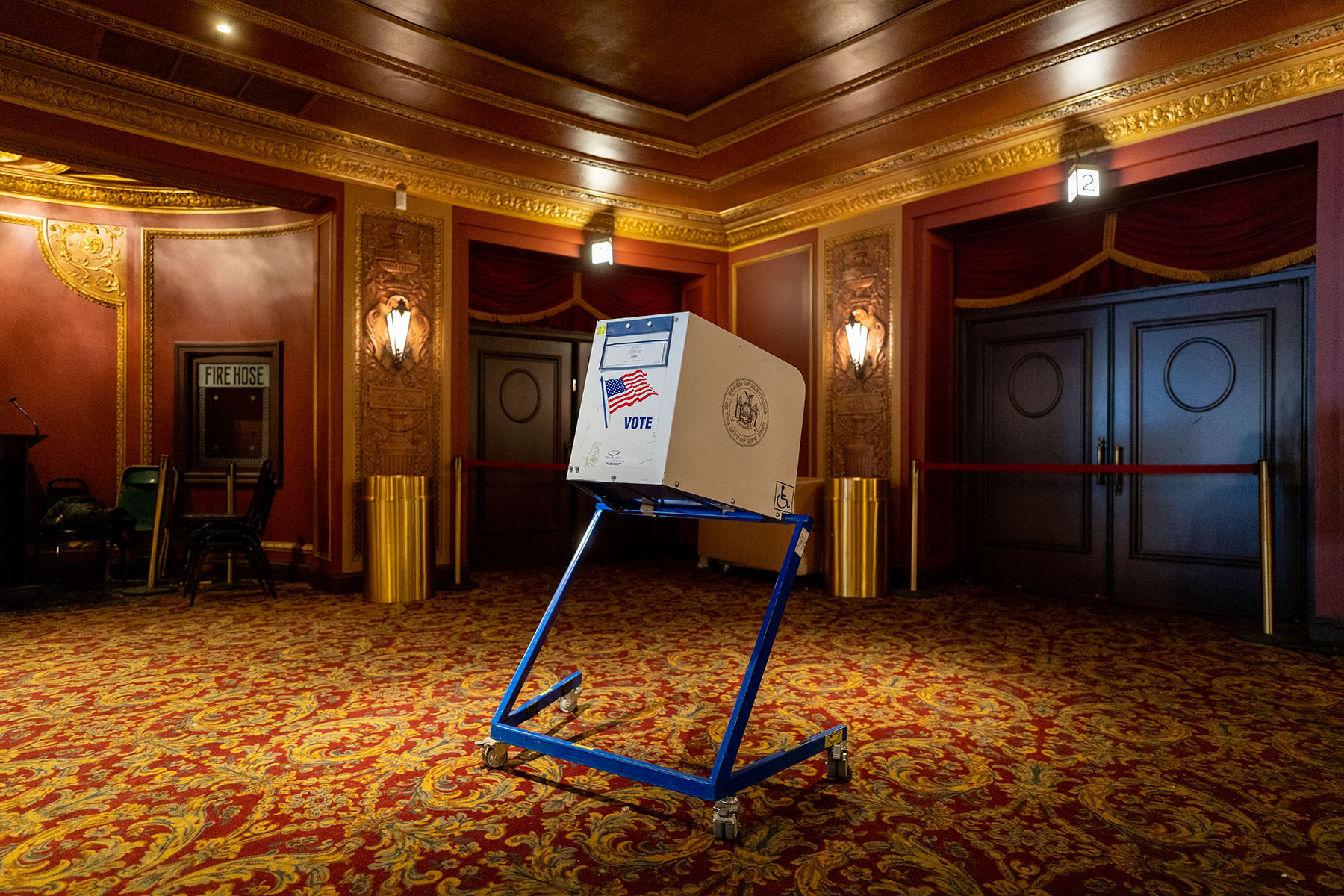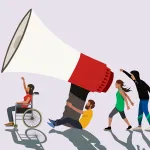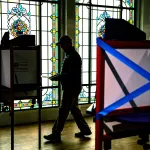One in 5 voters with disabilities either needed assistance or had difficulty voting in 2022 — three times the rate of people without disabilities, according to the most recent survey from the U.S. Election Assistance Committee (EAC).
The survey report, “Disability and Voting Accessibility in the 2022 Elections,” highlights the difficulties faced by the estimated 30 million Americans with disabilities who are eligible to vote and the subsequent negative impact on their civic engagement.
The survey assesses the accessibility of elections by exploring points like voter turnout, difficulties faced while voting and treatment by election officials.
People with disabilities had a 20 percent likelihood of having difficulties voting in-person, compared to 6 percent for people without a disability. With a mail-in ballot, the likelihood of difficulties voting for people with disabilities was 6 percent, compared with 1 percent of people without disabilities.
Maryland-based disability rights advocate Ola Ojewumi knows the challenges in accessing the ballot all too well. Ojewumi is a multi-organ transplant survivor and immunocompromised, and she uses a wheelchair.
Usually, an absentee ballot would suffice, but a serious hospitalization led to Ojewumi missing the deadline to request one and having to go in person to vote in the November 2022 election. After waiting hours for an accessible Uber that could accommodate her wheelchair that never came, she drove herself to the polls. When it was her turn to vote, she requested a voting station she could sit down in and was initially met with reluctance from polling officials. A poll worker told her that she didn’t look disabled.
-
More from The 19th
- Disabled people are underrepresented in politics. A new organization aims to change that.
- The 19th Explains: The Supreme Court case that could gut the Americans with Disabilities Act
- Nearly half of women with disabilities report experiencing sexual harassment or assault at work, poll finds
She was eventually given a chair and an accessible voting station, but by then the damage had been done.
“No one should have to prove their disability — no one. It’s dehumanizing. You should have access to whatever you need to do whatever you need for your life. Period,” Ojewumi said.
Challenges like the ones she faced keep voters from even trying to vote, the survey found.
After the 2020 survey, the EAC estimated that if voters with disabilities had voted at the same rates as voters without disabilities, there would be around 2 million more votes cast. It also found that disabled people voted at a 3.6 percent lower rate than those without disabilities, though that number narrowed to 1.5 percent after being adjusted with updated Census data.
Voting difficulties were most common among people who have vision and cognitive disabilities, and people were more likely to experience difficulties voting at polling places than mailing in their ballots. Nearly three-fifths of voters with disabilities voted with a mail ballot or early in person in 2022, compared to just over half of voters without disabilities.
The voting difficulties cited included getting inside the polling place because of steps; reading or seeing the ballot; difficulty using the voting equipment; writing on ballots; or communicating with poll workers or other officials.
While the survey found progress in voting accessibility from 2012 to 2022 — particularly related to the increase in mail-in ballots during COVID that ensure better access for people with disabilities — officials acknowledged that the work isn’t over.
“In 2022, election offices across the country maintained the momentum seen during the 2020 elections in creating accessible elections for voters with disabilities, but our research shows that there is still work to be done,” McCormick said.
The independent, bipartisan EAC was established by the Help America Vote Act of 2002 and uses survey data to achieve its mission “to help election officials improve the administration of elections and help Americans participate in the voting process.” The EAC has not released the survey’s methodology, such as how respondents were contacted, what parts of the country they came from or the margin of error.
“The findings from this study are crucial to the EAC’s efforts in equipping state and local election officials with the resources and guidance they need to plan for assisting voters with disabilities and making sure their polling places are fully accessible,” EAC Chairwoman Christy McCormick said in a statement.
In partnership with EAC and survey firm SSRS, Rutgers University conducted the post-2022 election survey of voting-eligible citizens both with and without disabilities. The survey, also conducted in 2012 and 2020, had 2,001 respondents, of whom 1,198 had disabilities.
The high number of disabled versus nondisabled respondents was done to ensure a large enough sample for small margins of error and to have reliable breakdowns by major types of disability and demographic variables, the authors noted.
In response to the election administration issues experienced during the 2000 presidential election, Congress passed the Help America Vote Act, which established comprehensive election reform, and for the first time, included provisions for disabled voters. Those included access to non-visual ballots and materials for visually impaired voters, or accommodations like sit-down areas to vote in or ramps.
Disability activists and advocates have been working to make voting more accessible for decades, often creating organizations to help the voters the government has left behind.
At the start of 2016, Alice Wong, Andrew Pulrang and Gregg Beratan co-founded the movement hashtag #CriptheVote, a call to action intended to rally voters with disabilities to the polls, but also to call attention to the barriers that were still in the way of them accessing democracy equitably and safely. The hashtag has grown into a nonpartisan movement and online community for voters with disabilities to continue discussing politics and policy issues.
Ojewumi, founder of global education nonprofit organization Project Ascend, also works to advance accessibility for those in need, most notably those with disabilities. After years of working at the intersection of disability advocacy and politics as a consultant, writer and activist, she saw an opportunity to empower others with disabilities to not just go out and vote, but to understand what protections and rights they have as voters with disabilities when they do. Project Ascend is a grant program and organization that supports and funds community service and education organizations.
From negotiating early releases from hospitalizations to not miss elections to educating poll workers on the rights of disabled voters, correcting for an inaccessible world is no new task for Ojewumi. Still, it makes for what she can best describe as a love-hate relationship with voting.
“It sounds cheesy, I know, but voting is so crucial — especially for people with disabilities — if we want to see change, because of the power our vote has. But while conversations and policy need to include us, at the same time I understand voter apathy because every day it feels like we don’t matter,” Ojewumi said.
Some advocates also highlighted that voting is not a cure-all. Imani Barbarin is a disability advocate and communications professional whose work includes hosting Vote for Access, a five-part YouTube series examining the problems with voting for people with disabilities. She said telling disabled people to “just go vote” isn’t enough — and doesn’t address the challenges they face inside and outside the polls.
“Voting is important, but also is living and surviving. Most disabled people in this country struggle to do that,” Barbarin told The 19th. “Disabled people are tired of just being brought up during elections because of what our numbers could do. Or as a gimmick.”
“When we think about voting, when we think about who has access to vote, we don’t think about disabled people,” she said. “As members of society, let alone members of a constituency.”







